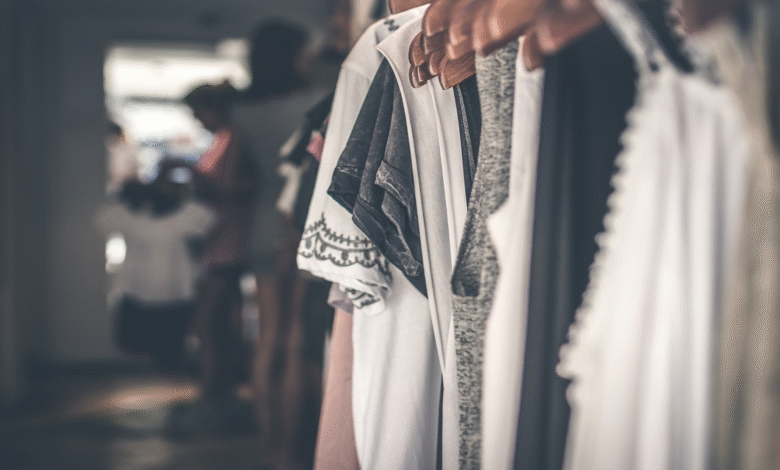Verdant Vogue: Practical Sustainable Fashion Trends Reshaping Style in 2025

Introduction
Sustainable fashion is no longer a niche afterthought it’s a practical, mainstream movement reshaping how clothes are designed, produced, sold, and consumed. From independent designers experimenting with regenerative fibers to major labels reconfiguring supply chains for transparency, sustainability now touches every stage of the apparel lifecycle. This article explains the core trends driving that shift and gives clear, actionable direction for brands and consumers who want to participate responsibly. I’ll focus on measurable changes materials, manufacturing practices, circular business models, traceability tools, and consumer behaviour while keeping quality, affordability, and aesthetics in view. The goal is to deliver grounded, experience-driven insight that satisfies Google’s E-E-A-T expectations by emphasizing verifiable practices, practical steps, and signals that demonstrate expertise and trustworthiness for readers and search algorithms alike.
Materials and low-impact textiles
The first tangible front of sustainable fashion is materials: the industry is moving away from virgin synthetic fibers toward regenerative, recycled, and bio-based alternatives that lower environmental footprints. Recycled polyester from post-consumer bottles and textile waste reduces reliance on crude-oil feedstocks and diverts plastics from landfills; closed-loop mechanical or chemical recycling is scaling to make this realistic. Natural fibers like organic cotton grown without synthetic pesticides, hemp, and linen are regaining popularity for their lower input needs and durability when sourced responsibly. Meanwhile, innovative bio-based materials mycelium leather alternatives, plant-protein fibers, and algae-based textiles are maturing from lab prototypes to small-batch production. Crucially, material choice now factors in end-of-life: designers are prioritizing mono-material construction and labels that clearly state recyclability or compostability. For brands, pairing material innovation with supplier audits and life-cycle assessments (LCAs) demonstrates measurable expertise and strengthens trust with customers looking for credible sustainability claims.
Circular business models and product longevity
Beyond raw materials, sustainable fashion’s second core trend is circularity: designing products and business models so garments stay in use longer and materials are reclaimed at end-of-life. Circular strategies include repair and refurbishment services, buy-back and resale programs, rental and subscription models, and design for disassembly to enable efficient recycling. These approaches increase garment utility and create new customer relationships while reducing resource demand. For smaller brands, offering repair guides and spare parts can extend garment life affordably. Larger retailers are investing in resale platforms and logistics to capture used inventory. Equally important is product quality: designing for durability, modularity, and timeless aesthetics reduces turnover and supports sustainable consumption. Transparency around take-back logistics, recycling partners, and resale grade criteria reassures consumers and fulfills E-E-A-T by providing verifiable pathways an essential step toward credible, long-term circularity rather than marketing-led greenwash.
Supply-chain transparency and traceability tech
A third major trend is the rise of rigorous supply-chain transparency powered by traceability technologies. Consumers and regulators now demand clear provenance: where fibers were grown, where garments were manufactured, and under what labor conditions. Brands are meeting this with supplier maps, blockchain-backed traceability, QR-enabled garment passports, and third-party certifications to validate environmental and social claims. These tools allow shoppers to scan a label and see origin stories, material footprints, and even worker welfare metrics when brands commit to detailed reporting. Traceability also helps brands identify hotspots for improvement for instance, water use in dyeing or emissions in transportation and to target meaningful interventions. For businesses, publishing traceability data with context and independent verification (audits, certifications) builds authority and trust. For consumers, such transparency transforms sustainability from abstract marketing into concrete evidence, aligning with Google’s emphasis on demonstrating expertise, experience, and trustworthy sourcing.
Mindful shopping and hybrid wardrobes
Sustainable fashion’s final trend centers on changing consumer behaviour: a shift from rapid consumption toward mindful, hybrid wardrobes that blend new purchases with secondhand, rental, and repaired pieces. Buyers increasingly prioritize multifunctional garments, capsule wardrobes, and versatile styling that extend the usefulness of each item. Social norms are evolving too: secondhand and rental are becoming fashionable choices, not compromises, driven by curated resale platforms and influencer-led “preloved” styling. Education plays a key role clear care instructions, repair tutorials, and honest marketing help consumers make informed choices that reduce overall demand. Price sensitivity remains real, so brands that combine affordability with verified sustainability credentials gain traction. Brands and creators who document their own process, share user stories, and provide clear data on product longevity and impact enhance E-E-A-T by showing real experience and transparency, which helps customers trust claims and adopt more sustainable behaviours.
Conclusion
Sustainable fashion in practice is a mosaic of intentional materials, circular business models, traceable supply chains, and evolving consumer habits. The movement’s credibility hinges on measurable actions life-cycle thinking, verifiable traceability, independent auditing, and honest communication about trade-offs. For brands, adopting these practices means investing in product longevity, transparent reporting, and third-party validation. For consumers, it means shifting purchasing habits toward quality, repair, and resale. Together, these changes create a resilient apparel system that balances style with planetary and social responsibility. Approached with humility and evidence, sustainability can be both fashionable and authentic and brands that demonstrate verifiable expertise and user-centered experience will lead the way.
FAQs
Q: What makes a garment truly sustainable?
A: A truly sustainable garment minimizes negative environmental and social impacts across its lifecycle: from responsible fiber sourcing (organic, recycled, regenerative) and low-impact manufacturing to fair labor practices, durability, and a clear end-of-life plan (reuse, repair, recycling, or composting). Independent certification or verifiable traceability strengthens credibility.
Q: Are recycled fabrics as durable as virgin materials?
A: Recycled fabrics can match or approach the performance of virgin materials when processed correctly. Mechanical recycling may reduce fiber length (affecting strength), but blended approaches and chemical recycling are improving quality. Look for brands that publish material testing data and lifecycle assessments.
Q: How can I verify sustainability claims from a brand?
A: Check for third-party certifications (e.g., GOTS, OEKO-TEX, Fair Trade), supply-chain traceability (supplier lists, QR codes), published impact reports or LCAs, and independent audits. Brands that provide transparent data and clear evidence are more trustworthy than vague claims.
Q: Is sustainable fashion more expensive?
A: It can be, especially for fully transparent, small-batch, or regenerative products, but higher upfront cost often reflects better materials and durability, lowering lifetime cost. Resale, rental, and repair options make sustainable choices more affordable while reducing waste.



